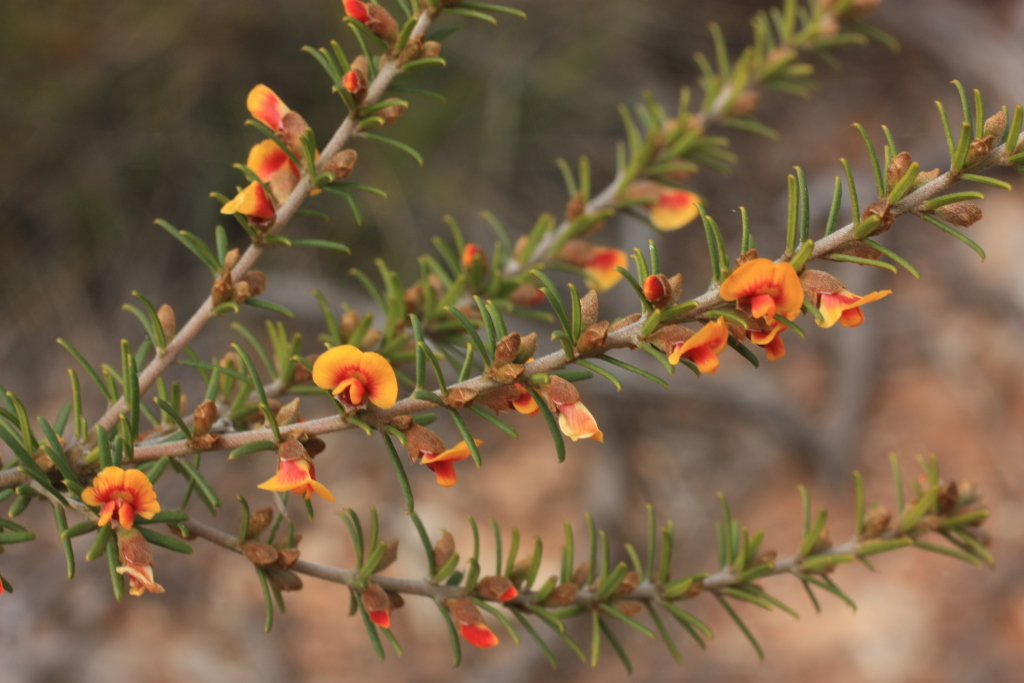Prostrate or erect shrub to 0.5 m tall; stems terete, appressed-pubescent. Leaves alternate or irregularly whorled, linear, mostly 8–15 mm long, c. 1 mm wide, lower surface glabrescent, upper surface glabrous, smooth or tuberculate, margins revolute, apex acute, pungent-pointed, often recurved; petiole to c. 0.5 mm long. Inflorescences axillary, often of solitary flowers; pedicels to c. 1 mm long. Calyx 2.5–4 mm long, pubescent, teeth shorter than tube; corolla 5–7 mm long, orange-red with blue or purplish markings, or bluish-purple; standard reniform, orange-red with purplish markings; keel nearly as long as wings, purplish; ovary sessile, pubescent, ovules 2. Pod ovoid, c. 3 mm long, beaked, pubescent, brown; seeds usually 2, reniform, c. 1.5 mm long. Flowers Sep.–Nov.
EGU. Also Qld, NSW, ACT. Currently known in Victoria from fewer than 100 plants on rock outcrops in the vicinity of Mt Coopracambra where it grows in shallow soil pockets on granite.


